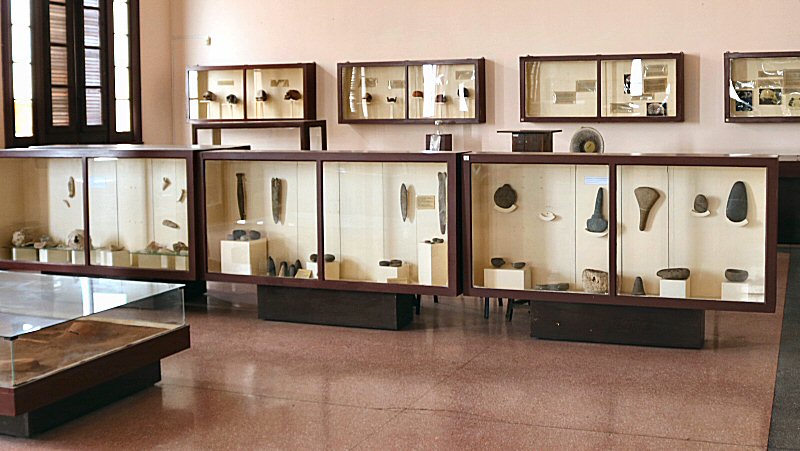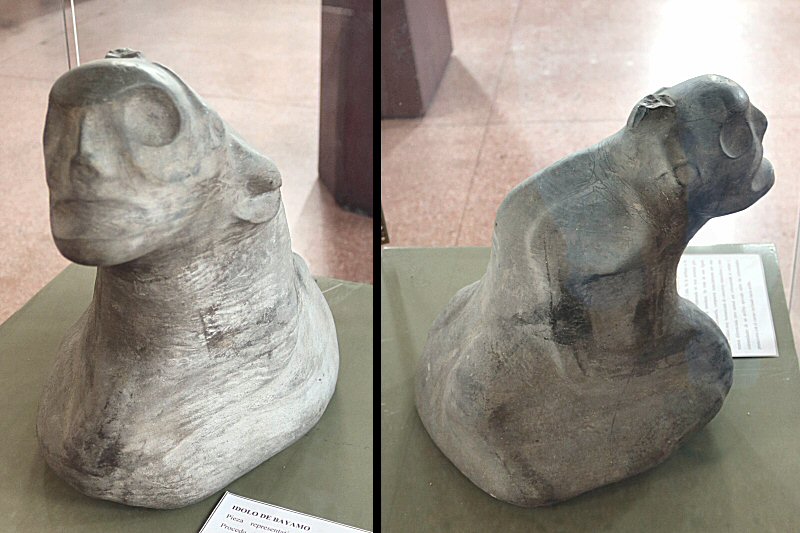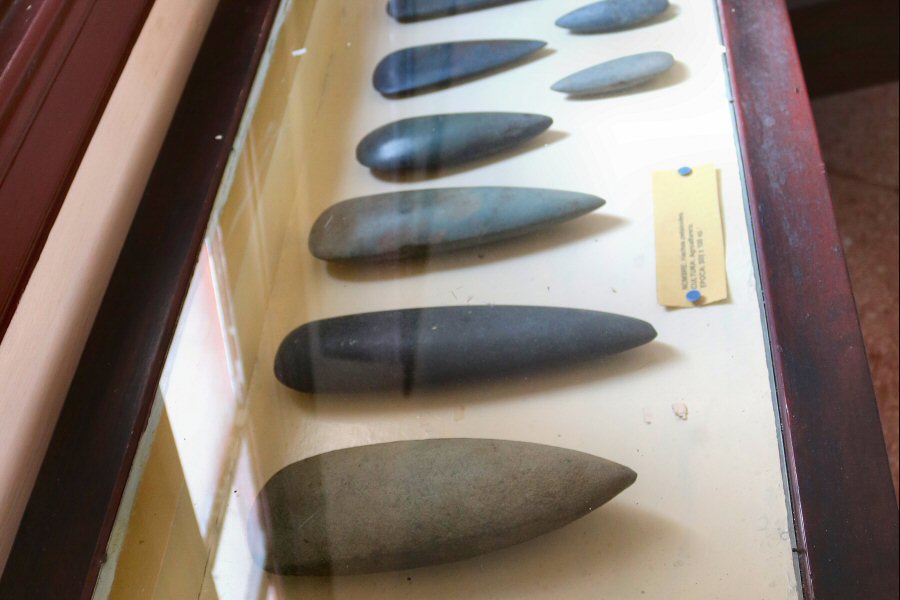
Another most valuable piece of the
collection of the museum is the Idolo de Bayamo that is also the
oldest piece of the collection and one of the biggest sculptures
in stone, found in the Caribbean. It was found by a peasant
during hoeing in a farm in Bueycito, close to Bayamo. The
peasants assumed that the stone statue belonged to a saint. When
this discovery was published in a newspaper in Havana in 1848,
the news aroused the interest of Miguel Rodriguez Ferrer, a
Spanish scientist that is considered to be the initiator of the
archaeological research in Cuba. He donated
several pieces that he had collected in Camagüey and Oriente,
to the Museum of the University of Havana. When he was touring
the country in search of archaeological sites, he got in touch
with Manuel Desiderio Estrada, the owner of the farm Eguarrabó,
where the statue was found, and received the permission to study
on the statue. Later he donated it to the museum.
The massive figure is made of
semi-hard greenish gray sandstone by carving, percussion,
abrasion and polishing techniques. The cephalic part of the
statue looks like a human with masculine character, whereas the
less differentiated body and the limbs have the character of an
amphibian that sits on its hind limbs like a frog or toad. The
head has open eyes, formed by two empty hollows. The depressed
nose has marked nostrils. The elongated mouth purports an
unpleasant rictus; lips are indistinct. The sharp contour of the
mandible stands out. It has a short and thick neck. The body is
inclined upwards, representing the erectile male sex. The rest
of the figure has not so much obvious detail. It has a height of
about 35 cm and weighs about 23 kg.
It is exhibited in the museum since
1972. It is attributed to sub-Taino culture. It is considered
that it is associated with a deity linked to the seas and
rivers.
The museum collection contains also some axes, used by some Taino groups. The so-called cave ax (hacha de cueva) was found by some peasants in the Cave of Ponce, at the tip of Maisi, the province of Guantánamo, and it was delivered to Miguel Rodríguez Ferrer, the Spanish scientist, in 1847. It is a ceremonial ax, representing a cemí or divinized Taino entity. In the museum you will find its reproduction. The original is made of diorite. It was produced by chopping; then it was polished. It has a schematic face on both sides and small arms curved backwards. The discovery of both of the cave ax and Idolo de Bayamo is considered the beginning of the science of archeology in Cuba.
The Hacha de Holguin (Ax of Holguin),
the symbol of the city of Holguin, was found by a Spanish
officer in 1860, while he was wandering around the hills near
the city of Holguin. In 1936 it was added to the collection of
the museum and after the Revolution it returned to Holguin. You
will find its reproduction in the museum, whereas the original
is in the Archeology Room of the Provincial Museum La Periquera.
It has a length about 3,5 meters; it
has a width of about 75 cm and a thickness of about 5 cm. It
belongs to 15th-century agri-pottery groups It was made by
carving the olive-green peridotite stone. It represents a male
figure with a headband on the top. Its arms are placed on the
chest. It was used as an invocation instrument during Aboriginal
ceremonies and rituals.
Its small size replica is given as
award to some outstanding personalities that made meritorious
contributions to the province of Holguin and Cuba, like Fidel
and Raúl Castro, the historians José García Castañeda Eusebio
Leal, the singer-songwriter Silvio Rodríguez.


